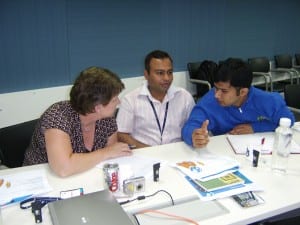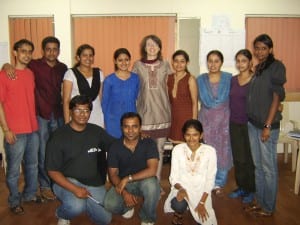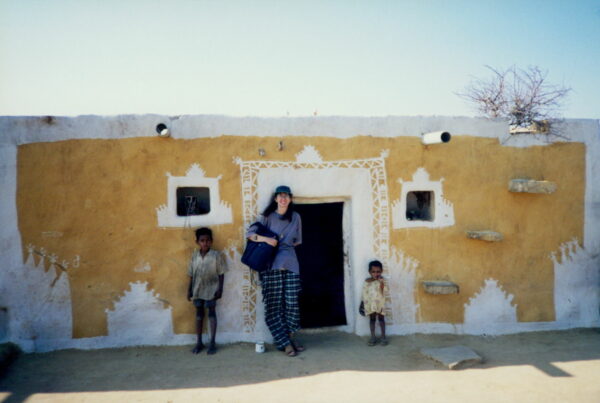As many of you read, my journey to India last week tested my patience and endurance. I have been training for a 5K run thank goodness, as I needed every bit of that strength to make it through the barrage of missed flights and taxis. At long last I arrived and as soon as I smelled the sweet scent of India all of the pain was forgotten. I had the chance to work with a global team for a large US-based consumer goods company, as well call center employees from an Indian company, and MBA students from Bangalore.
This trip has made one thing abundantly clear to me and I want to share it with you: The global workforce has undergone a significant change and most companies are not even aware of it.
As I mentioned in a previous post, the line between offshore and onshore is blurring. In the past several years, the average Fortune 500 company had a presence in India in some form. Some hired contract employees to do back office work, some had manufacturing plants there, and some sold products to Indian customers. Most of my work last year was with the former, specifically engineers working with Indian contractors in an offshore relationship.
My primary objective was to help these clients navigate the cultural differences between the US and India that affected their jobs, until I began to notice a pattern. Whether or not the US workers and their Indian counterparts were technically part of the same company or not, their ability to achieve results depended on their working as a high-performing team. Few of them, however, had gone past the “forming” stage of team building, and some never even got there; they remained in the mindset that their counterparts across the globe were a cost-savings measure and a threat to their jobs.
I began to realize that cross-cultural competence was no longer enough to meet today’s global demands – no, companies needed to build true teams, and spectacular ones at that. They needed to be aware and skilled at recognizing cultural differences and designing strategies to leverage them, but even that was not enough. Leaders needed to find the bridge between the differences, the intersection or “sweet spot” where each team member’s talents and strengths contribute to a whole unit that works toward achieving the company’s goals.
Such teams do exist, though they are rare, and I saw one at work on this trip to India. I was asked to conduct a pilot program in Mumbai for a Global Teams project the company will be sponsoring over the next year. US counterparts flew over to meet their Indian teammates, offer technical training, and take part in my teambuilding. Two US team members participated virtually in my session, an interesting undertaking in itself! All I can say is that I have never seen a newly formed team so functional, so energetic and ready to work together. Each member shared their ideas (with some of the Indian members that took a little encouragement), and each idea was valued. The team leaders gave a clear vision to the team, and they agreed on communication protocols as well as process flow. More than that, they enjoyed being together. I gave them a complex project to work on in separate rooms and only communicating by phone and e-mail, and they completed it in thirty five minutes. Cultural differences still hovered in the room, but they were openly discussed and the team was given the chance to create its own culture. I can hardly wait to work with them again next week via virtual classroom.To me this team represented a live example of where all companies should be focusing their energies.
I invite you to ask yourself the following questions:
- Is my global workforce operating as a highly effective team?If not, where are the gaps?
- No matter what the format of the relationship (contractor, employee, etc.) how are we implementing the best practices of successful global virtual teams?
- How am I fully leveraging the talent and resources in my global workforce?
- Do we have a team mission or purpose? A shared vision? Specific communication protocols? Specific process mapping? Inspiring leadership?
- Are we aware of how to handle cultural differences on our team? How are we building bridges between them?
The global workforce is changing and we must be ready. Culture is no longer a dividing force, but a source of talent and diverse perspectives. To achieve our primary business goals, we need to build dynamic global teams, no matter what the business structure looks like on paper. Let us continue this dialogue! Are you part of a successful global team? What best practices have worked for you? What are the next steps in your opinion? What are your challenges? Comments are most welcome.






